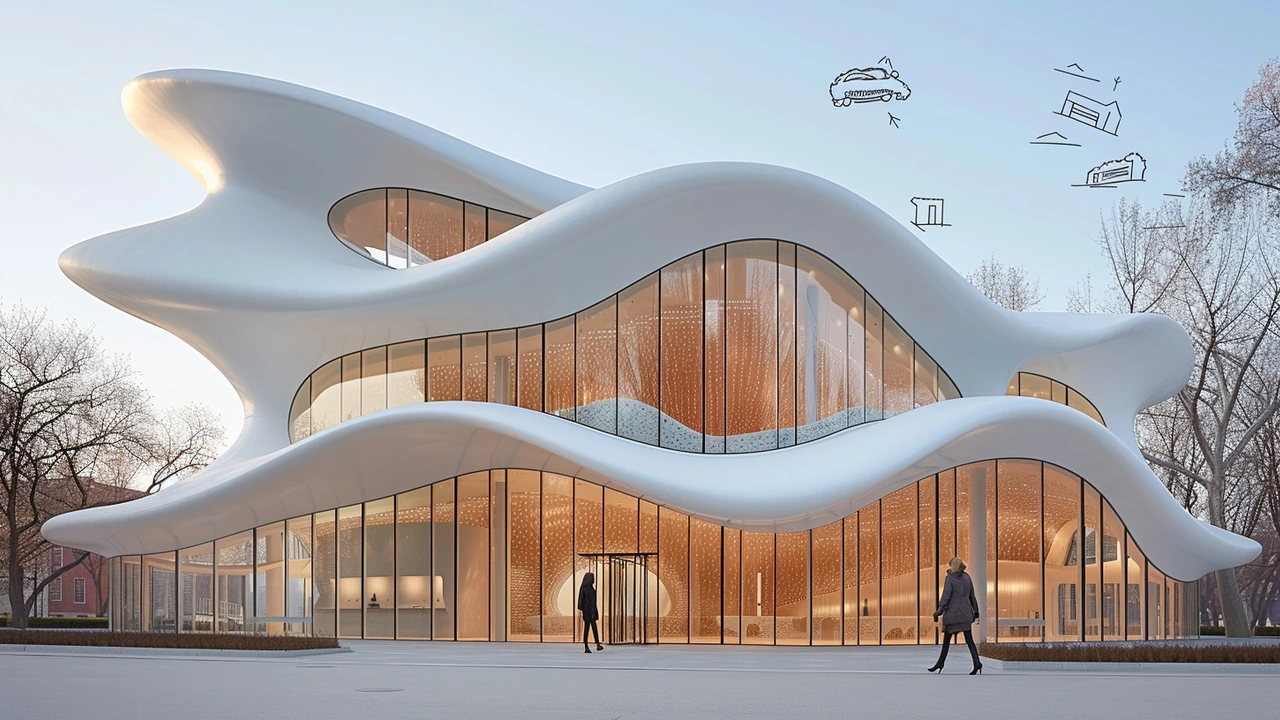Expressionist Architecture: A Journey into the Heart of Design
 Nov, 28 2023
Nov, 28 2023
The Core of Expressionist Architecture
Let's dive deep into the sea of Expressionist Architecture, an art movement often neglected in favour of its more famous siblings, such as Art Deco and Art Nouveau. But just between us, it's the black sheep of architecture design circles that's well worth getting acquainted with.
Expressionist architecture first reared its creative head in Europe around the early 20th century, right at the onset of World War I. Its inception was revolutionary, shunning the traditional straight lines and favoring the unconventional, organic form. I like to think it's like a rebellious teenager seeking to make an impactful impression in the stiff world of architecture.
Understanding the Expressionist Vision
So, what exactly is Expressionist Architecture, I hear you ask? Well, in simple terms, it's a deliberate detour from the predictable. Think less in squares and boxes, and more in the lines of fluidity, emotive textures, and curvaceous spaces that conjure up a certain drama to them. Basically, if an architect woke up one day and decided to make a building dance, the result would be an expressionist design. Remarkable, isn't it?
Aesthetics play a crucial role in expressionist architecture, with each design telling its unique story. Individual interpretation at its heart, there's no room for 'one size fits all' in this genre. It's inherently personal and imaginative, much like the architect’s very soul turned into a structural reality!
Spotting an Expressionist Gem: Characteristics and Icons
Now, how to spot an Expressionist building in the wild, you might ask? Well, look out for dramatic, sweeping forms, liberal use of glass and open-plan spaces. The buildings often exhibit an eccentric interplay of light and shadow, brimmed with a potent emotional resonance. The styles are as varied as the architects themselves, but always looking to push boundaries.
Some shining examples of Expressionist architecture include the Sydney Opera House, with its stunning shell-roof design, and The Einstein Tower in Germany, which looks like it's stepped straight out of a surreal painting. I remember the first time I saw the Sagrada Familia in Barcelona. It looked like a massive art sculpture that somehow also functioned as a church. These landmarks truly encapsulate the spirit of the movement—bold, unconventional, and decidedly emotional.
Behind the Bricks: The Forces Driving Expressionist Architecture
The catalyst of Expressionism was an era of profound social and technological change. Rapid urbanization, modernization, and the trauma of war spurred architects to move past the classical. It is born of chaos and change, an artistic exploration of the internal world projected outward. I imagine architects of the time, peering out at a rapidly changing landscape, thinking, "You know what, we need something to shake up the status quo." And just like that, expressionist architecture started taking flight.
Also, a crucial driving force being the rapid development in construction methods and materials. Concrete and glass, for instance, were being produced in new, exciting ways. I mean, who wouldn't want to play around with the possibility of constructing buildings from glass?
Taking Inspiration: The Influence of Expressionist Architecture
If you thought Expressionism was a dropped stitch in the fabric of architectural history, think again. Its influence can be seen in the subsequent modernist architecture shifts, such as Brutalism and Organic architecture. Designers continue to draw inspiration from this dramatic and unconventional style, incorporating its ethos into contemporary applications.
At its core, expressionist architecture is all about making an emotional statement—of creating a sense of place that is unique and individualistic. It’s about creating a dialogue, stirring emotions, and challenging the conventional. And that’s why, even after all these years, the principles of expressionist architecture continue to weave their influence through modern design.
Expressionist Architecture and I: An Unforgettable Encounter
Now speaking of influence, I remember a one-of-a-kind encounter with expressionist architecture that left a lasting imprint on me. Back in my uni days, I was travelling across Europe with a ragtag group of friends (as you do), and we ended up in Prague. It was there I stumbled upon the iconic "Dancing House".
Co-designed by the renowned architect Frank Gehry, the unusual twisting structure of deconstructivist style, it wasn't your typical building—it was a pair of dancing figures, an architectural tango set in stone and metal. It was then and there that I realised the impact such an architecture could have and how it could bend our perception of traditional spaces. It was, dare I say, a life-changing experience. I often think about that encounter when I look at architectural designs.
Final Thoughts: Embracing the Unconventional in Architecture
As we conclude this enlightening journey through expressionist architecture, I invite you to step back and take a fresh look at the buildings around you. Evaluate their aesthetic appeal, their emotional resonance, their story. Know that behind each structure is a soul poured out, a statement made, a rebellion against the mundane. Today, the principles of expressionist architecture, with its emphasis on individual interpretation, emotion, and creativity, are more relevant than ever before.
Next time you pass by a building that makes you stop, look and wonder—remember that it's not just a conglomeration of bricks and steel—it's someone's thoughts, feelings and vision made tangible. So let’s not just live in our buildings—let’s feel them, experience them, appreciate the uniqueness they bring forth. In the world of expressionist architecture, the spaces we inhabit are not just places, they're experiences.